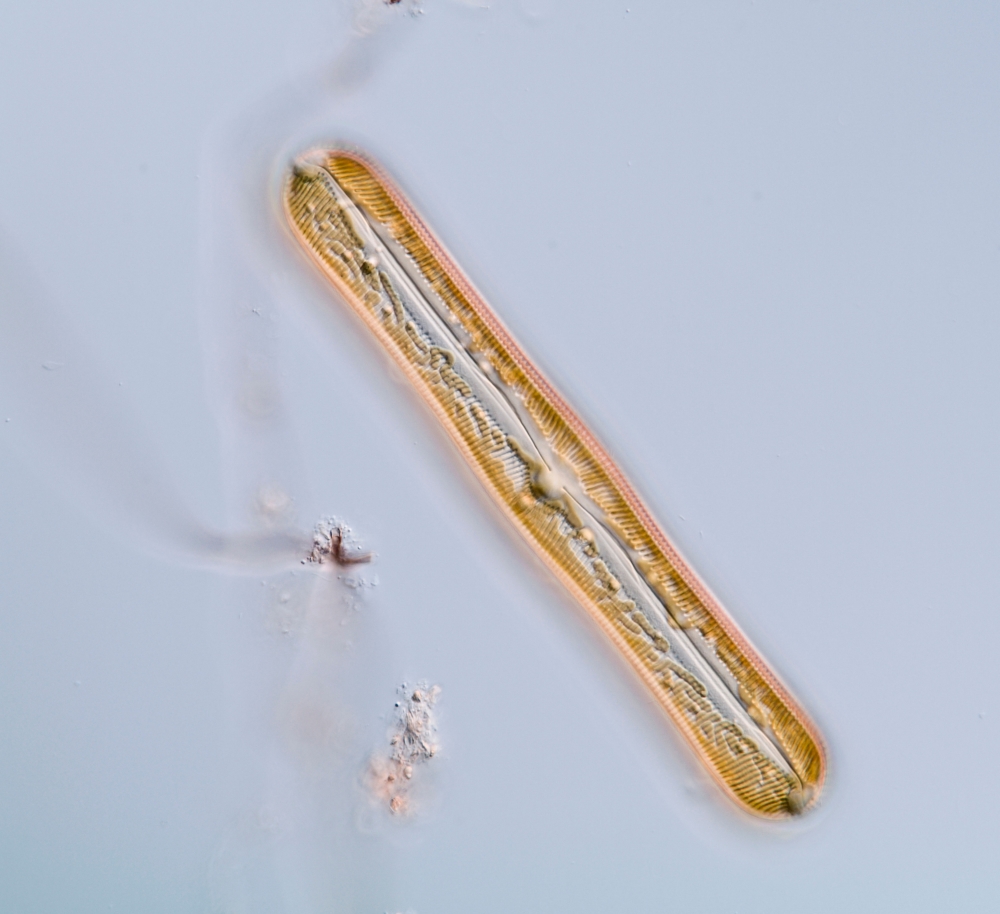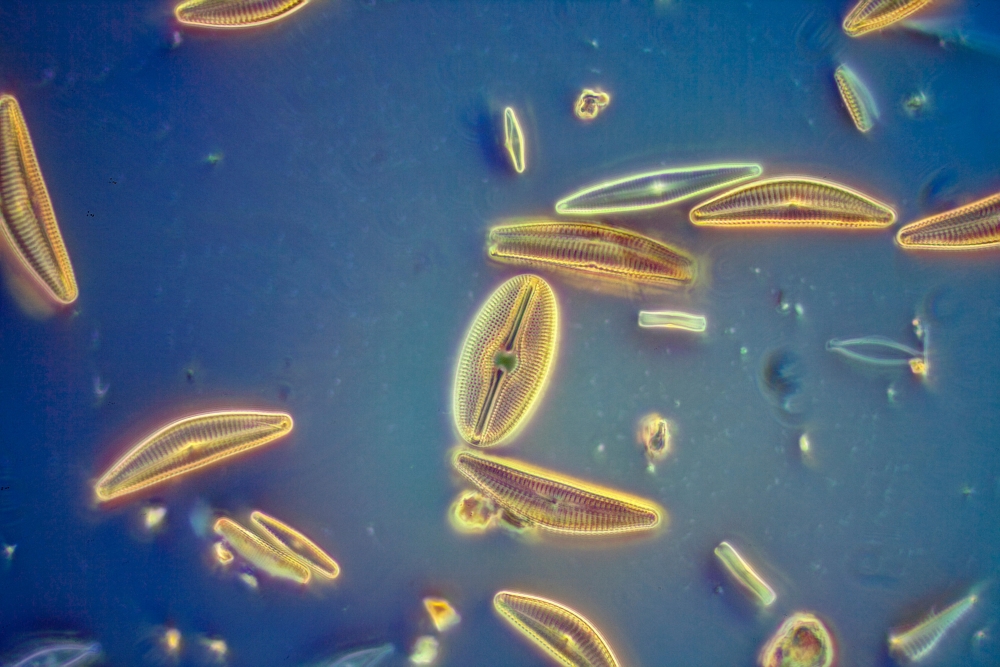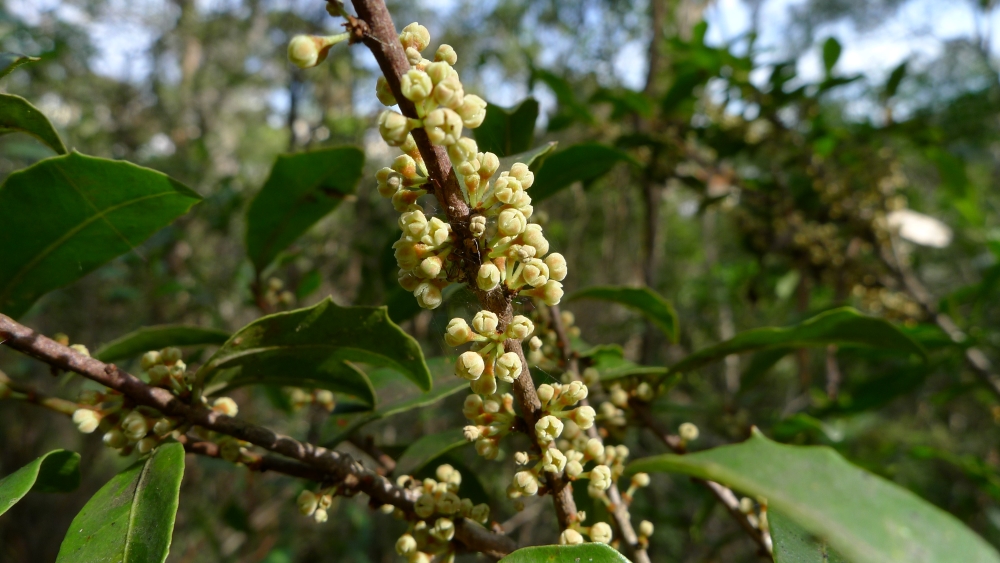Rapanea Community Forest
Located on the eastern edge of Telopea, Rapanea Community Forest is a densely vegetated linear environmentally managed area occurring along the Ponds Creek corridor.
The Rapanea Community Forest is an environmental heritage item under the Local Environment Plan (LEP) and is a protected environmental zone. It is also identified as an area of high Aboriginal archaeological sensitivity in the Parramatta Development Control Plan (DCP) 2023.
This ecological community is characterised by the presence of muttonwood trees (Myrsine variabilis, formerly Rapanea variabilis) – a tree native to Eastern Australia. These shrubby trees are small in size, growing to around 15 metres tall to form a dense canopy. They have a straight grey-barked trunk, up to 50cm in diameter and shiny tooth leaves. They are noted for their dense, dark foliage and attractive blue fruit. Cream flowers form in clusters along the ends of branches from July to August. The fruit attracts birds and butterflies and is eaten by Lewin’s honeyeater and the Rose-crowned Fruit Dove.
Lewin’s Honeyeater is a locally common bird, dark greenish grey in colour, with a creamy yellow gape and large yellowish crescent-shaped ear patches. They feed mostly on fruits, favouring berries, but also eat insects and nectar-bearing flowers. Both parents care for the young birds. Their nest forms a large cup of vegetation, bound together with spider web and lined with soft material.
The importance of aquatic life
As you travel through the bushland of the Upper Ponds bushland corridor, you are also following the path of the Ponds Creek. Like the bushland that lines its banks, the Ponds Creek is home to a diverse and fascinating range of lifeforms that play a number of important roles in the ecosystem.
Some of the life forms in the Ponds Creek are too small to see with the naked eye. Diatoms are microscopic, single-celled algae that are one of the smallest links in the aquatic food chain. Unlike any other organism known on Earth, diatoms have a cell wall made of silica – the main compound used in the production of glass – creating a strong protective barrier between the outside world and the diatom’s internal “organelles”. This has led to diatoms being described as “algae living in glass houses”. These silica cell-walls cause diatoms to have beautiful, almost kaleidoscopic shapes, and are found in both freshwater and marine environments all over the world.
In addition to serving as a food source for larger organisms like macroinvertebrates, small fish, and snails, diatoms play an important role in the carbon cycle. Like plants, diatoms generate energy through a process known as “photosynthesis”. Through this process, diatoms take in sunlight and carbon dioxide from their environment and convert it to energy via a chemical process within their cell. Oxygen is released as a by-product of this process, oxygenating the water they live in, supporting the array of aquatic organisms that “breathe” via gills. In oceans, photosynthesizing diatoms are known to help capture billions of tonnes of carbon per year, that would otherwise have ended up in the atmosphere, contributing to elevated CO2 levels that can affect global climate and ocean acidity.
Maintaining the Balance
As important as diatoms are, it is important that their numbers remain in balance with other aquatic life. Excessive nutrients in water can cause dramatic increases in diatom populations, which can be disastrous for other aquatic life when dead diatoms decompose, a process that can quickly deplete oxygen levels in water. This process can lead to “blackwater” events, where large numbers of fish quickly suffocate due to sudden drops in dissolved oxygen in water leading to fishkill events.
Excessive nutrients can enter waterways through organic materials and chemicals (such as fertilisers) washing into the creek through stormwater pipes. For this reason it is important to keep grass clippings, food waste, dog faeces and sediment out of the stormwater generated from homes and streets.
Council officers do monitor water quality in selected waterways, but there are also citizen science programs that make it possible for volunteers to take a more active role in monitoring the health of waterways.
The Streamwatch Program, currently administered by Greater Sydney Landcare, is a citizen science water monitoring program that trains and enables community groups to monitor the quality and health of local waterways. For more information about this program, please visit the Greater Sydney Landcare website.



Unaltered image By John Tann from Sydney, Australia


